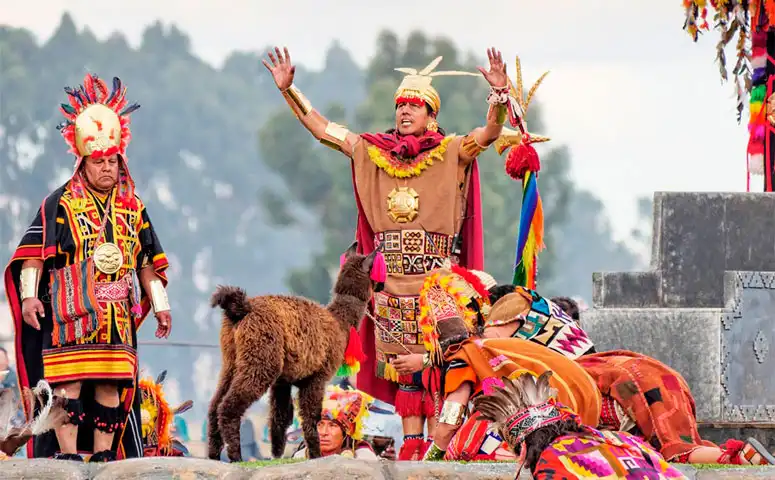
The ancient capital of the Incas pulses with tradition, dressed in faith, alive with Andean music, and immersed in its folkloric dances during its Andean and Catholic festivities and celebrations. This whirlwind of devotion and merriment is echoed throughout the region, making it another compelling reason to plan your holiday in Peru.
Experience the vibrant culture in the “navel of the world,” where Mother Earth (Pachamama) and Father Sun (Tayta Inti) are celebrated, along with the Lord of Qoyllur Riti and the body of Christ. Here, crosses are adorned along the paths, and in the lead-up to Christmas, artisans showcase their finest creations to decorate nativity scenes.
Cusco is a tribute to the land, with saints arriving in procession to the Plaza de Armas, irreverent carnival parades, and pilgrims ascending snowy peaks to pray and dance… In short, this festive and colourful Cusco awaits you to hear the prayers of its people and dance to the rhythm of its instruments.
Come to Cusco to feel and actively participate in one or more of these celebrations:
Contents
Bajada de Reyes
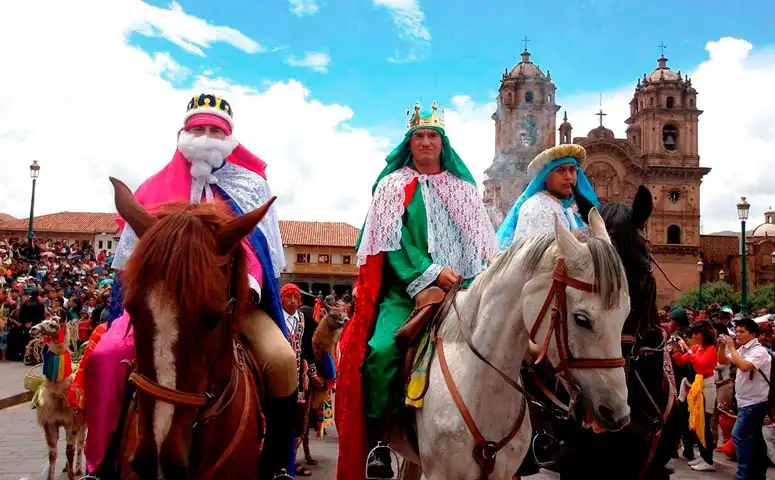
On the day that commemorates the visit of the Three Wise Men, traditional clothing for Niño Manuelito, a distinctive image of the newborn Jesus in Cusco, is sold in temples and plazas. The garments of the also-called Niño de la Espina are crafted by skilled artisans.
In Ollantaytambo (in the Urubamba province), the Bajada de Reyes is a special day. Families gather to dismantle the nativity scenes, an act symbolising brotherhood, togetherness, and solidarity—core values in this district of the Sacred Valley of the Incas. The procession of the Niño de Marcacocha also takes place.
Throughout various districts and towns in Cusco, representations of the arrival of Melchior, Gaspar, and Balthazar—the Three Wise Men from the East who visited the Christ Child in Bethlehem—are organised.
Date: 6th January
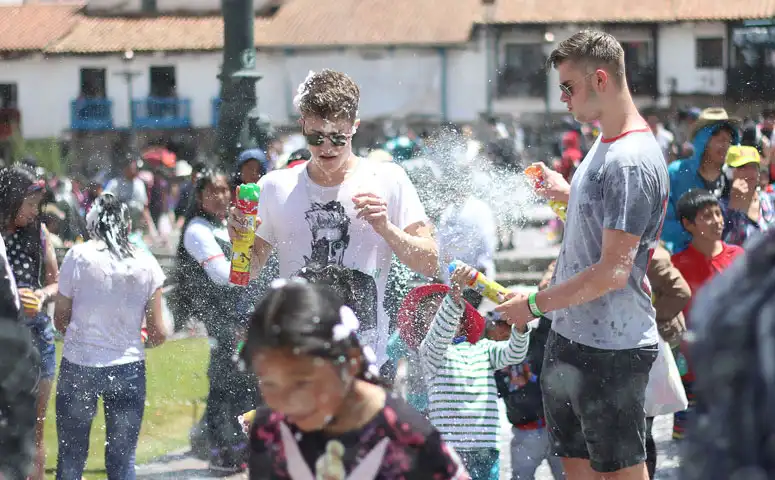
Water games, talcum powder, and foam. Allegories, music, and dance in a celebration where Cusco’s Plaza de Armas, with its Inca and colonial atmosphere, is taken over by vibrant parades featuring workers from both public and private institutions in the city.
But Carnival is much more than just a Sunday parade. The delicious flavours are an additional element that will make you smile. After the games and dancing, it’s customary to visit the gastronomic festivals, where you can treat your palate to iconic dishes and drinks like timpu or puchero, and the refreshing frutillada.
The celebration also honours the compadres and comadres, intertwined with the yunza, where participants dance around a tree adorned with gifts. They take turns trying to chop it down with an axe. The person who succeeds gets to organise the party the following year. When it falls, everyone rushes to grab a gift.
Date: February and March
Easter week
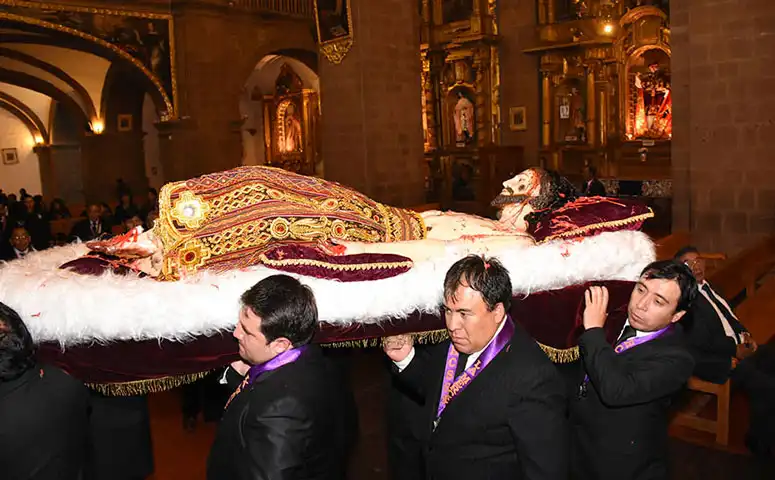
In Cusco, the procession of the señor de los Temblores is the main event of Holy Week. Revered since colonial times, this image of the crucified Jesus is recognised as the city’s Patron Saint and is housed in the Basilica Cathedral.
Also known as Taytacha Temblores, it is believed that he calmed the fury of the earth in 1650. That year, a massive earthquake struck the colonial city, but his intervention mitigated the disaster’s consequences.
With dark skin, the body, limbs, and head of the image are made from maguey and balsa wood. His clothing features indigenous designs and is crafted from linen.
Due to the smoke from the candles placed at his feet for centuries, his skin has darkened, taking on a hue similar to that of the indigenous people. These characteristics foster a sense of belonging and representation among his devotees, who feel a close connection to the miraculous Christ when they see him.
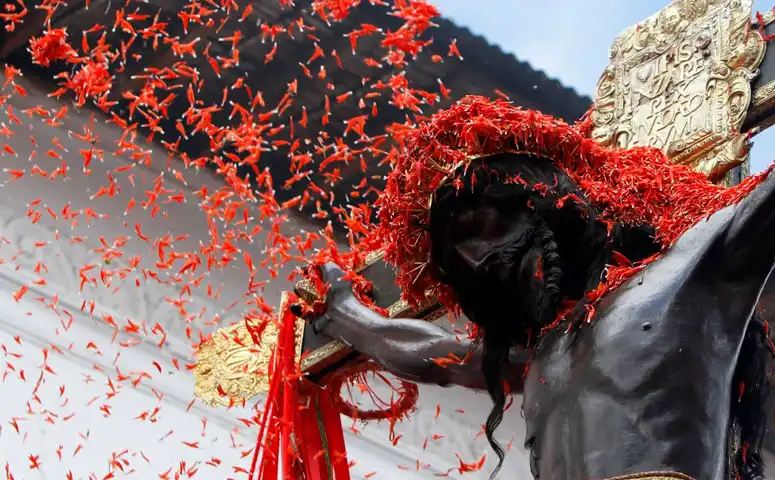
On Holy Monday—after the blessing of the palms on Sunday—the streets are adorned with solemnity. Carpets, tapestries, and fine fabrics are displayed in the windows of the buildings lining the routes taken by the beloved Taytacha.
Holy Week features other traditional scenes. On Holy Thursday, the seven temples are visited. The following day, twelve dishes are served, showcasing the exquisite variety of Cusco’s gastronomy. It’s a celebration rich in flavours and reflections on the life, passion, and death of Jesus Christ.
Date: Variable, from 13th to 20th April.
Feast of the Cross or Cruz Velacuy
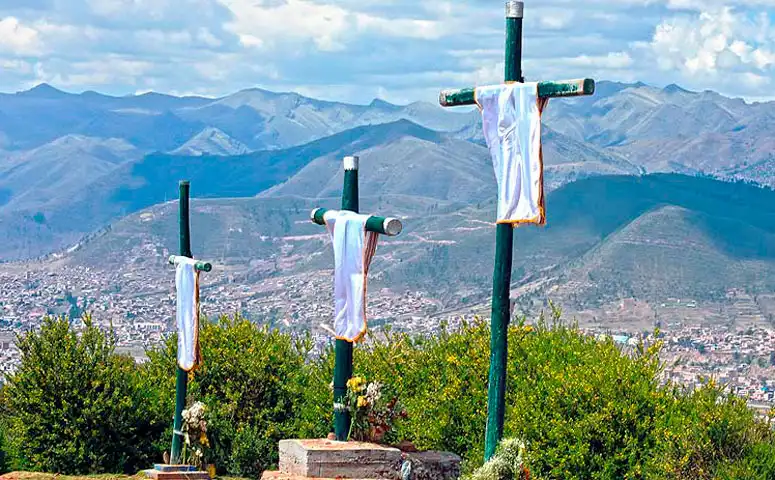
In the atriums of temples, at the viewpoints of towns, and along the high mountain paths, there are emblematic crosses that are venerated and respected; perhaps because many were placed in locations that were sacred long before the arrival of the Spanish.
These holy wooden crosses are honoured each year in Cusco and other regions of the Andean Peru. Generally, devotees travel to the shrines and mountain summits to bring the so-called “crosses of the path” back to their communities. These crosses are “vigilled” on the nights of 2nd May in churches or chapels.
The following day, parishioners visit the cross, and as is customary in the Andes, prayers are accompanied by religious music and huaynos, traditional dances, communal lunches, and the sound of fireworks. When the vigil ends, the crosses return to their original places.
Date: 2nd and 3rd May.
Señor de Torrechayoc
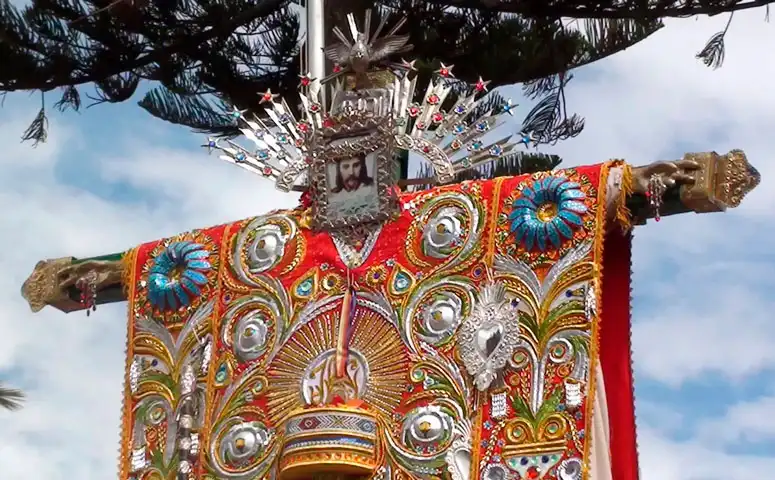
Masses, processions, cultural events, traditional dances, bull runs, communal lunches, and participation from parades are just some of the activities that the devotees of Urubamba, in the Sacred Valley of the Incas, organise in honour of their Patron Saint, the Lord of Torrechayoc.
The origins of this marathon celebration, which lasts approximately a month, date back to 1860 when a cross was placed in a snowy area on the outskirts of Cusco. The extraordinary occurred some time later when several people passing by began to report hearing a strange voice lamenting the cold it felt.
According to the story, the locals concluded that this voice belonged to the Christ on the cross. Faced with such a revelation and miracle, a parish priest deemed it necessary to move the cross to Urubamba, where the Lord of Torrechayoc was received with pride and joy.
Date: Variable. The central day coincides with the celebration of Pentecost (8th June in 2025).
Señor de Qoyllur Riti
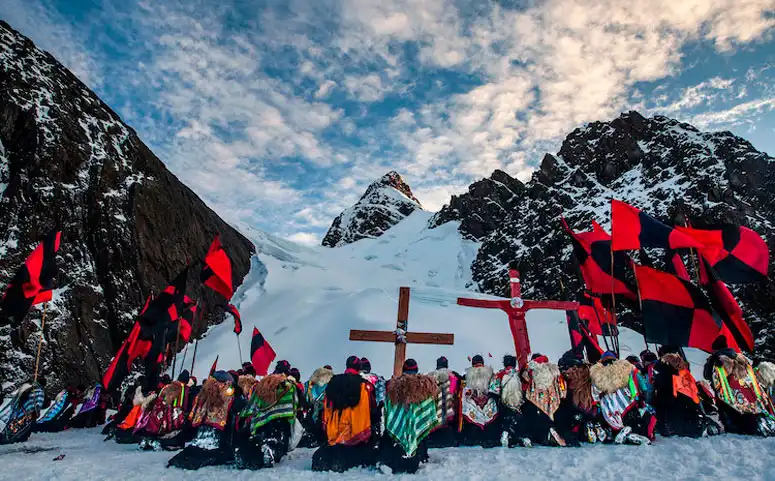
It is one of the most impressive and massive pilgrimages in the world. Marked by religious syncretism, hundreds of thousands of devotees from the Andean nations ascend to the snow-capped Sinakara to visit the sanctuary of the Lord of Qoyllur Riti, which translates to “Lord of the Star of Snow” in English.
The image of this Christ of the heights appeared on a rock near Sinakara, one of the peaks in the Vilcanota mountain range, within the domain of the apu Ausangate. Every year, pilgrims from Peru and other countries, such as Bolivia and Ecuador, arrive at the mountain to worship the Star of Snow.
Walking at thousands of metres above sea level, feeling the cold of the mountains, is a true test of faith. Only those who can endure the distance and withstand the low temperatures reach the sanctuary, where masses and various rituals of veneration take place, including ancestral music and dances.
Due to its cultural and historical significance, the festival of the Lord of Qoyllur Riti has been declared by UNESCO as an Intangible Cultural Heritage of Humanity.
Date: Variable (40 days after Palm Sunday).
Corpus Christi Cusqueño
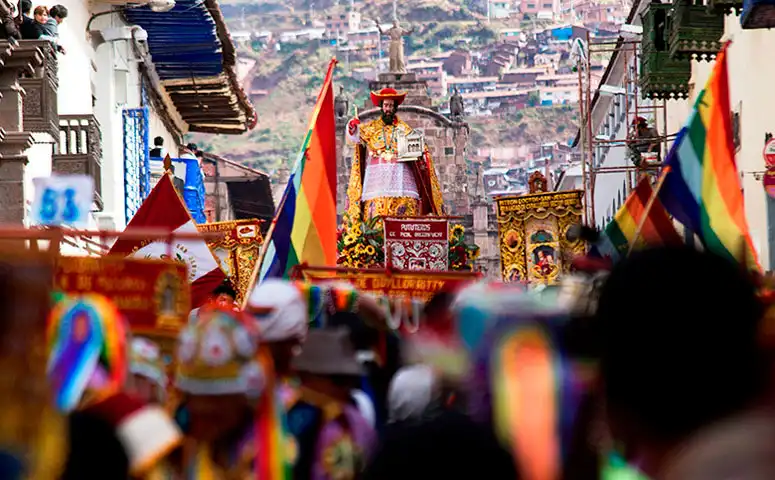
The feast of veneration of the body of Christ in the Eucharist is celebrated with the processional exit of the main images from the churches of Cusco. All of them are carried on platforms to the Cathedral, where they spend the night “dialoguing” with the Lord of the Tremors, the city’s patron.
That’s what is said in Cusco, but it’s not the only story. It is said that on certain occasions, the Incas “paraded” their mummified ancestors. Upon learning of this custom and with the aim of spreading their faith, priests “replaced” the bodies of the ancestors with images of saints and virgins.
This “strategy” is believed to be the origin of the Cusco Corpus Christi, where 15 images from the city’s neighbourhoods arrive in the Historic Centre with their own bands of musicians, known as Q’aperos. Dances and delicious flavours are also part of this moving celebration.
If you travel to Cusco and your visit coincides with the festival, make sure to try chiriuchu (cold spicy ají), the flagship dish of Corpus that harmonises flavours from the coast, mountains, and jungle. Its varied ingredients range from cochayuyo (seaweed) to the controversial cuy.
Date: The Thursday following the octave of Pentecost (19th June 2025).
Inti Raymi
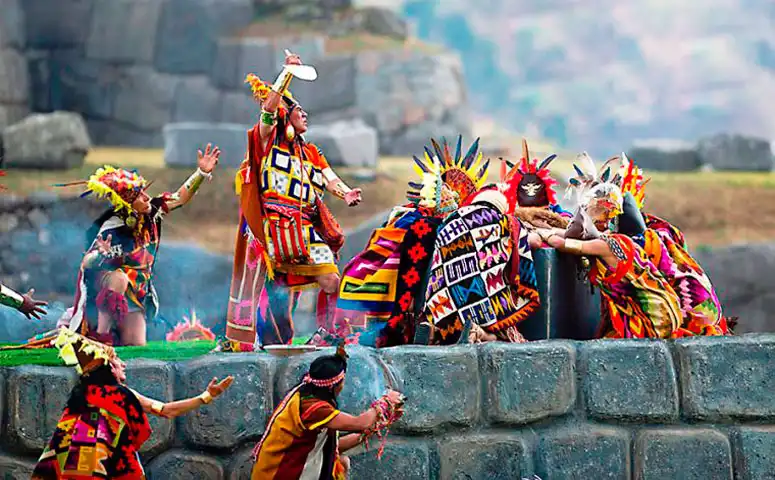
The Festival of the Sun (as it is known in Spanish) coincides with the winter solstice in the Southern Hemisphere. Dedicated to Inti, the father and main deity of the Incas, it was one of the great celebrations of pre-Hispanic Cusco.
Prohibited and banished during the viceroyalty, Cusco’s intellectuals and artists organised to “rescue” it in 1944, creating a script for this festival that reclaims Andean culture. The ceremonies and rituals of the current Inti Raymi take place at Qoricancha, the Plaza de Armas, and the archaeological park of Saqsayhuaman.
The lavish Inti Raymi draws thousands of national and international spectators. Everyone vibrates with excitement during a ceremony where the sapan inca (the ruling Inca), the coya (the principal wife), and the villac umu (high priest), among other characters, once again take centre stage in the “navel of the world.”
Date: 24th June.
Virgen del Carmen
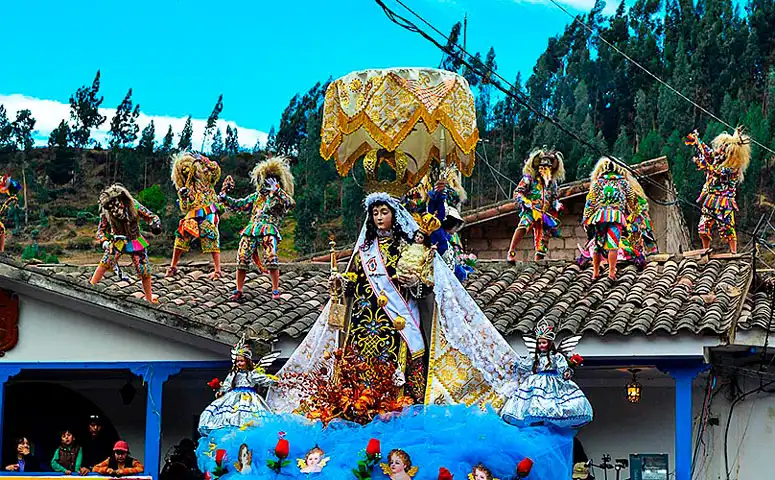
In Paucartambo, the capital of the province of the same name, people pray, dance, and even fight in honour of the Virgen del Carmen, who, according to tales, was contested between the Collas, the inhabitants of the high Andean regions, and the Chunchos, natives of the Amazonian forest.
The Guerrilla, as this confrontation is called, is the highlight of a festival featuring processions, a variety of folkloric scenes, visits to the cemetery to honour deceased dancers, and groups of saqras (devils) that ascend to the balconies and rooftops of the town to tempt Mamacha Carmen.
The festival of the Virgen del Carmen, the protector of the mestizos, blends the sacred with the ancestral, showcasing the dazzling identity and cultural heritage of the people of Paucartambo, who are devoted to an image that, despite the disputes, is cherished by both Collas and Chunchos.
Date: 15th to 18th July.
Pachamama Day
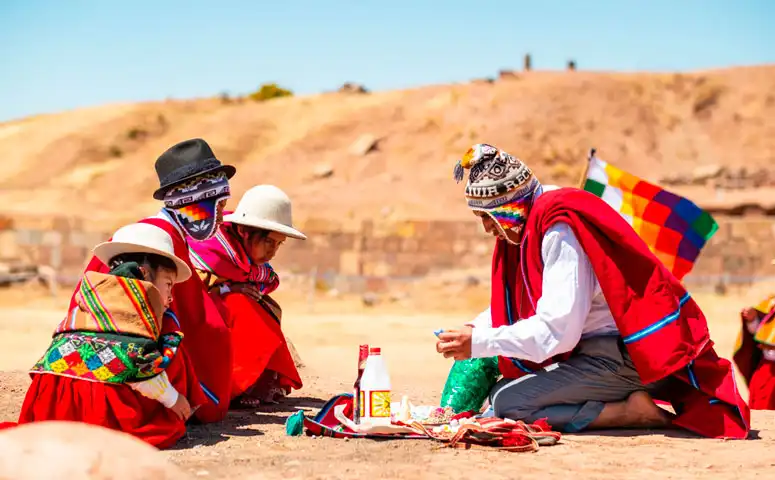
In Andean culture, Pachamama is a deity representing the feminine essence of love, fertility, and protection, revered as the source of life and sustenance. This close relationship is maintained in various South American countries, such as Bolivia, Colombia, Chile, Ecuador, and Argentina.
On Pachamama Day, farmers perform rituals in which they acknowledge and return to the earth all that it has given them throughout the year. In these ceremonies, where coca leaves play a fundamental role, various offerings are buried in the hope of maintaining natural balance.
Mother Earth is honoured with offerings of cooked foods, coca leaves, wine, and chicha, among other products. Witnessing these ceremonies is an enriching experience that encourages reflection on the importance of protecting the environment and the ecosystems of our global home.
Date: 1st August.
Señor de Huanca
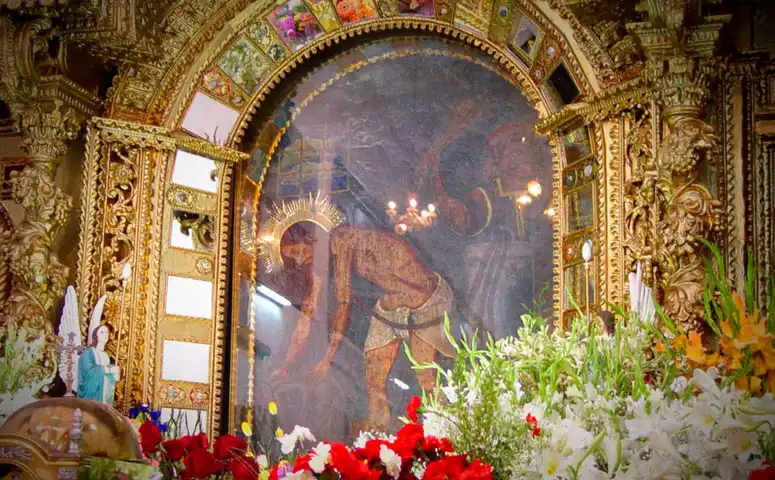
In the 16th century, at the dawn of Spanish domination, the indigenous mason Diego Quispe suffered a terrible accident while working on the construction of a church. During his convalescence, he had a revelation that would lead him to a remarkable discovery.
Upon regaining his health, Diego set out in search of the place he had seen while bedridden. There, according to the revelation, he would find an image of Christ engraved on a stone. And that’s exactly what happened. This marked the beginning of the cult of the Lord of Huanca, whose sanctuary is located at the site explored by the humble mason.
Today, this image of the martyred Christ attracts thousands of devotees to the district of San Salvador (in the province of Calca). The faith of his followers is so strong that many walk in pilgrimage to the sanctuary, located about 48 km from the Historic Centre of Cusco.
During the festival of the Lord of Huanca, masses and processions are held, among other activities in which the pilgrims actively participate.
Date: 14th September.
Santurantikuy
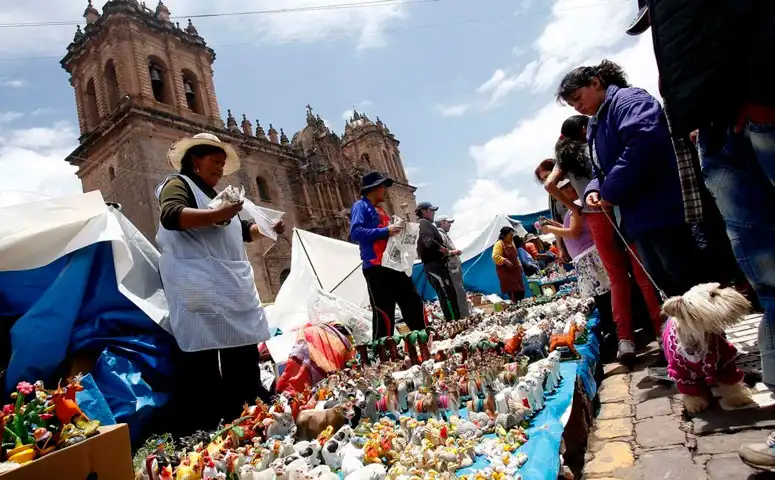
On Christmas Eve, in the Plaza de Armas and the streets of the San Blas neighbourhood, local artisans display and sell images of Niño Manuelito, the Virgin Mary, Saint Joseph, and other figures ideal for nativity scenes, showcasing the religious syncretism of modern Cusco.
The imagers, true masters of their craft, proudly present their creations that will stand out in Cusco’s nativity scenes and crèches, which incorporate mountainous landscapes and characters in traditional attire, among other cultural expressions of Andean culture.
At Santurantikuy, each piece is a window into the soul of the Andean people and a celebration of their identity.
Date: 24th December.
New Year
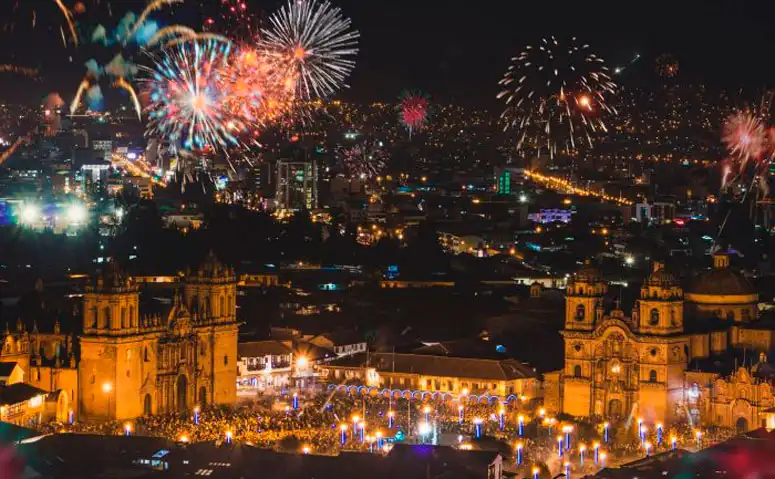
Positive energy, good wishes, fireworks, and a string of traditions mark the beginning of each new calendar year in Cusco. The celebrations kick off on New Year’s Eve, 31st December, with the Plaza de Armas serving as a meeting point for locals and visitors alike.
In the ancient Inca capital, a series of rituals are performed to ensure that the upcoming year is extraordinary. If you’re part of the festivities, wear a yellow garment for prosperity, carry lentils in your pockets to attract wealth, and at midnight, eat 12 grapes while making the same number of wishes. They’re sure to come true.
These aren’t the only traditions. If you want to travel a lot, step out with your suitcase or backpack and run through the streets. A lap around the block is enough to ensure a year filled with adventures. As you make your way, the fireworks turn the plaza into a beautiful scene filled with warmth and hope.
Date: 31st December to 1st January.






